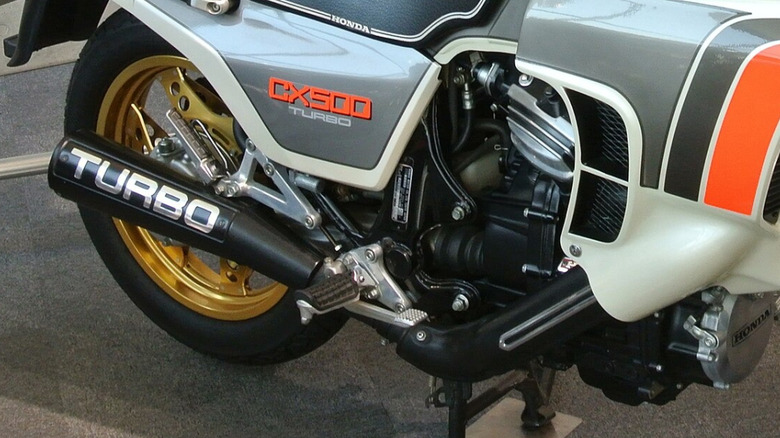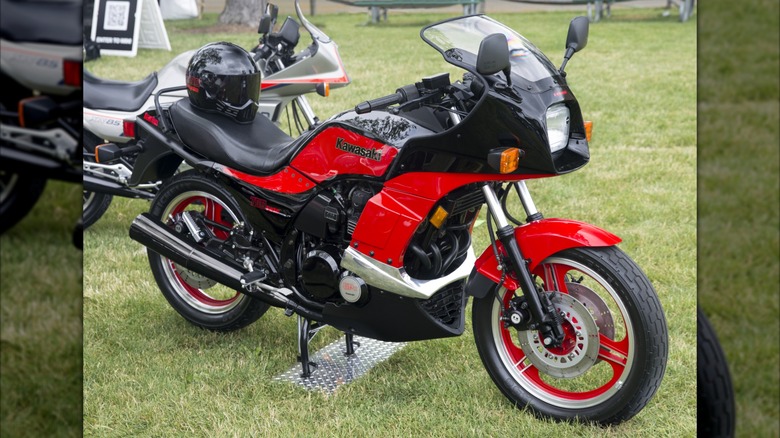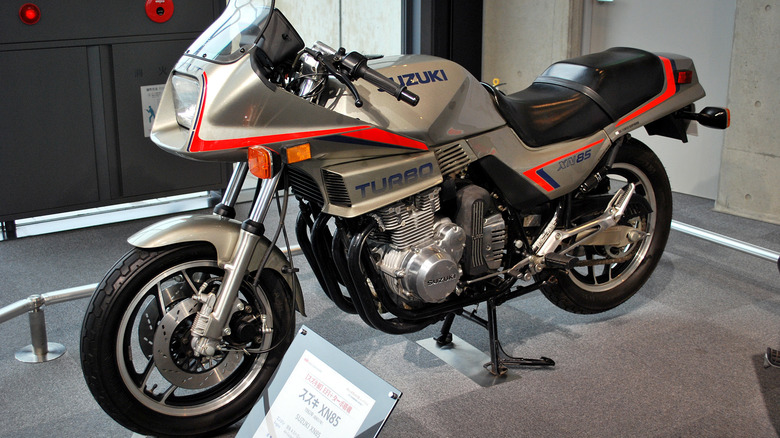Why Aren't Turbocharged Motorcycles Popular?
There's nothing more thrilling to a gearhead than the sounds and effects of forced induction. The dramatic acoustics from the workings of a turbocharger is a mind-high shared globally by most automotive enthusiasts. Turbos might have been popular in the performance car scene in the beginning, but today, they are commonplace in pretty much any vehicle — from tiny three-cylinder city cars to heavy commercial trucks.
The only segment of automobile lovers missing out on all the spooling action of a turbo is motorcycle aficionados. Why are turbocharged motorcycles so rare? Well, slapping a turbocharger will do more than just increase an engine's horsepower; it can also improve fuel economy. For this reason, some automakers will drop a cylinder and replace it with a turbocharger. This works perfectly for cars, but for motorcycles, the application of a turbocharger is a bit more complicated.
On the surface, there are a couple of engineering trade-offs involved in slapping a turbo onto a two-wheeler. For starters, the power-to-weight ratio will be affected, and the domino effect is a less-than-comfortable ride experience. Add the financial burden of the application, and a turbocharged motorcycle isn't as attractive an idea to a manufacturer.
Extra weight on a motorcycle matters
Motorcycles are designed to be lightweight and highly maneuverable. Adding a turbocharger means more weight on the bike: A potentially 30 or 40-pound device on a motorcycle might seem harmless on the surface, but the truth is that turbocharging an engine is not a simple plug-and-play application.
To effectively run a turbocharger on a motorcycle, the system will need an intercooler, extra exhaust piping, oil and vacuum lines, electric wiring and sensors, and a blow-off valve. Including these quickly adds to the overall weight of a motorcycle. Motorcycles are meant to be light and agile, so making them heavier will significantly affect their maneuverability, especially in heavy traffic conditions.
Unlike cars, bikes rely heavily on the rider for balance — a heavy bike will be cumbersome to a rider, especially in situations where they are required to wade through tight spaces or physically lift it.
Cost-to-benefit ratio of turbocharging a bike
Turbochargers are known to produce sudden, yet delayed power — automotive experts call it "turbo lag." This sudden surge of power is thrilling in a car, but on a two-wheeler, it can make it harder to control, especially in corners or on slippery surfaces. Quite frankly, it is a safety risk even to experienced riders.
Despite its massive appeal to thrill seekers, turbocharging a motorcycle isn't always worth it. The turbocharging system is quite complex and costly, and requires more than a turbo kit. The gearbox, tires, and braking system might also need an upgrade to handle the expected power gains. At the end, the bump in power might not be as huge as you'd expect. Picture this: A typical turbo setup in a car will have a 25% gain in power. Therefore, a 60 horsepower, 500cc motorcycle on such a setup would theoretically only make 75 horsepower. All that for a modest 15-horsepower bump.
An easier, more rider-friendly alternative would be to increase the engine's displacement. The bike would have more power without sacrificing the linear power delivery that motorcycles are known for. Some may argue that traction control can help manage turbo power, but that further complicates the riding experience. Ultimately, there's likely more to lose than to gain from turbocharging a motorcycle.


